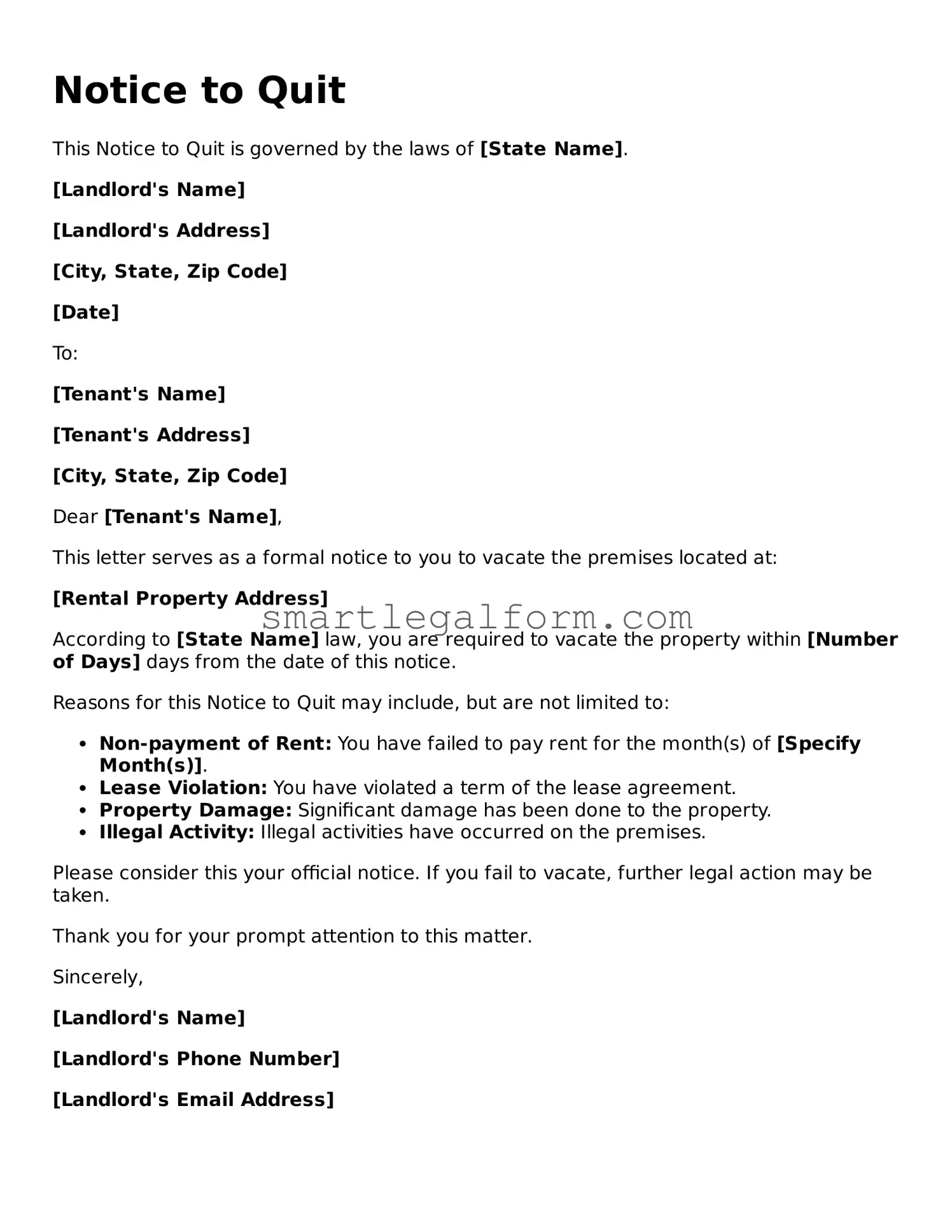Attorney-Approved Notice to Quit Form
The Notice to Quit form is a legal document used by landlords to inform tenants that they must vacate the rental property within a specified timeframe. This notice serves as a formal request for tenants to leave, often due to lease violations or non-payment of rent. Understanding this form is crucial for both landlords and tenants to ensure a smooth transition and avoid potential disputes.
Ready to fill out your Notice to Quit form? Click the button below to get started!
Fill Out Your Form Online
